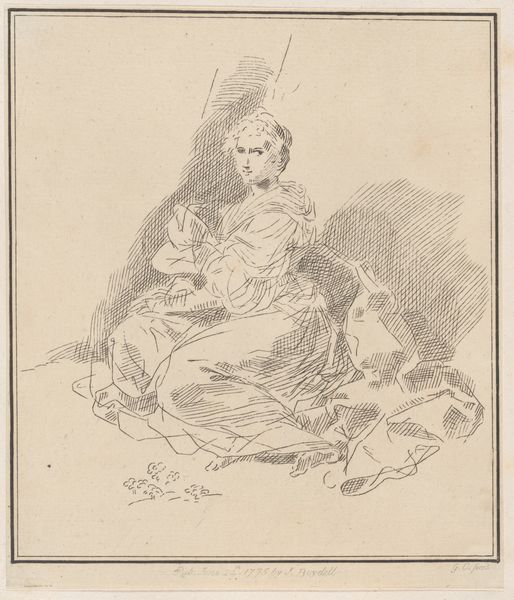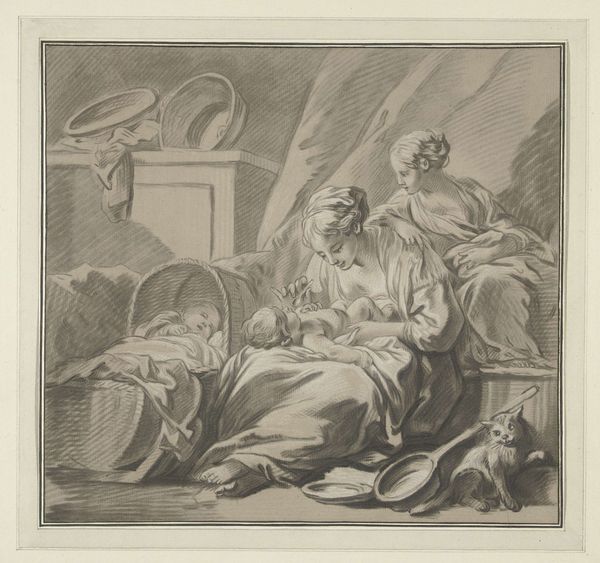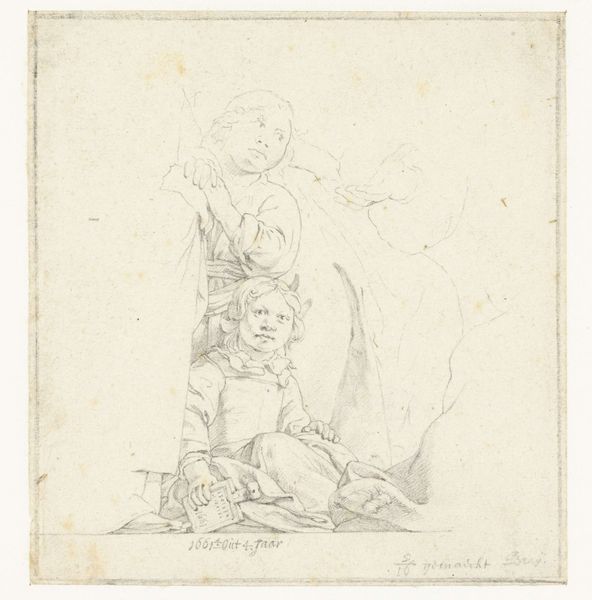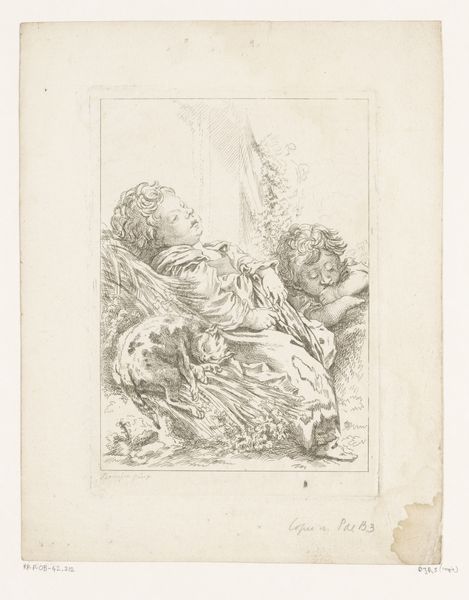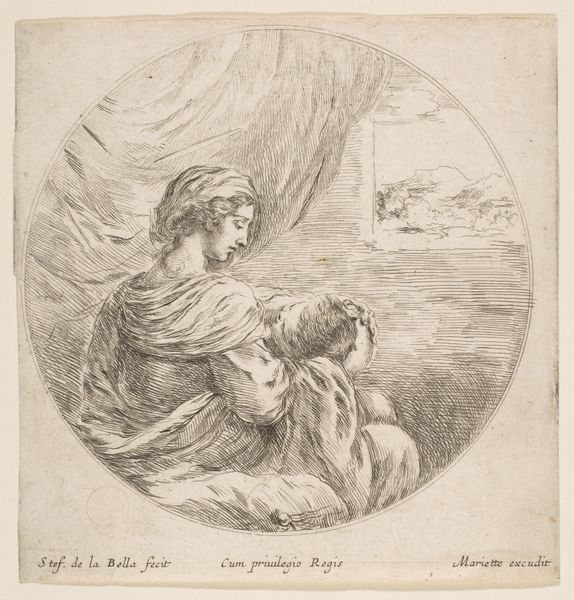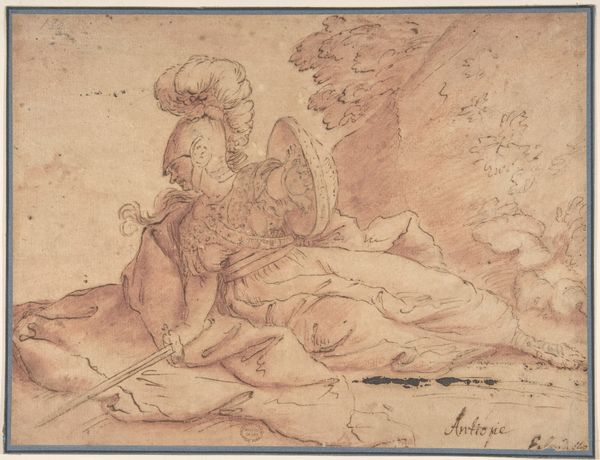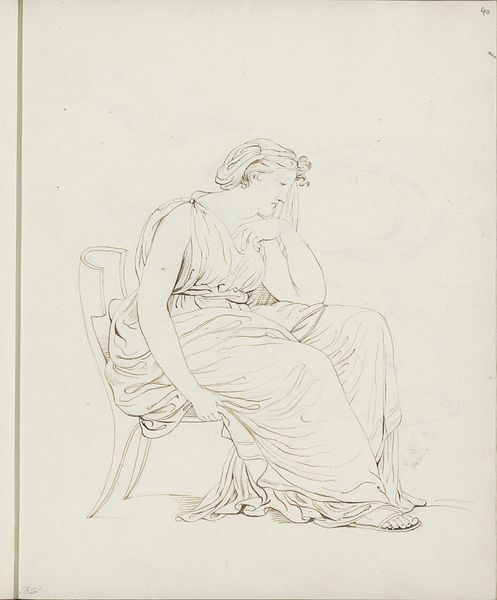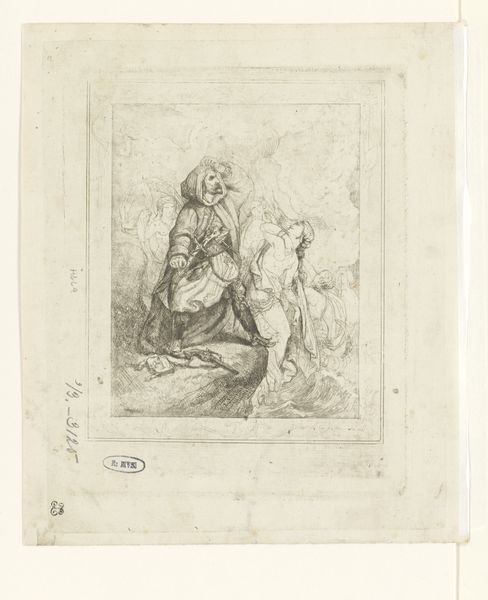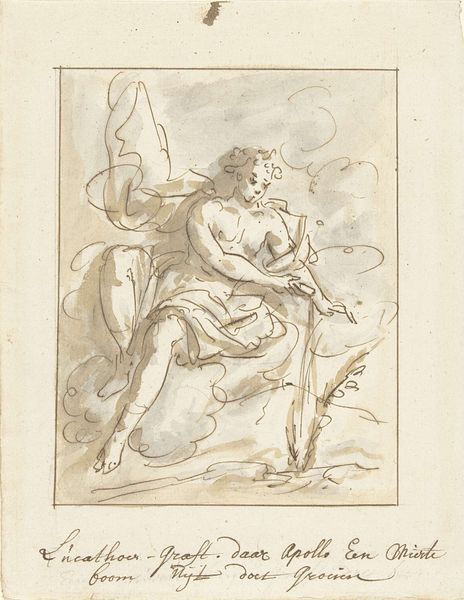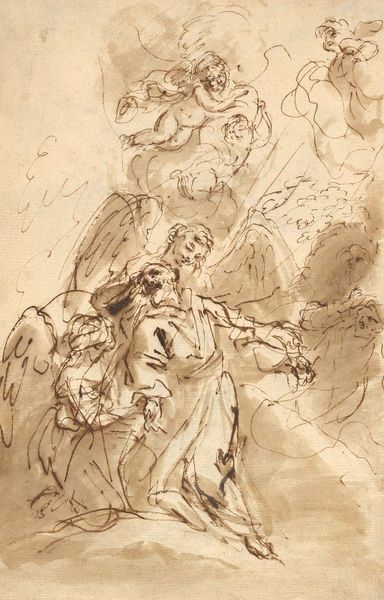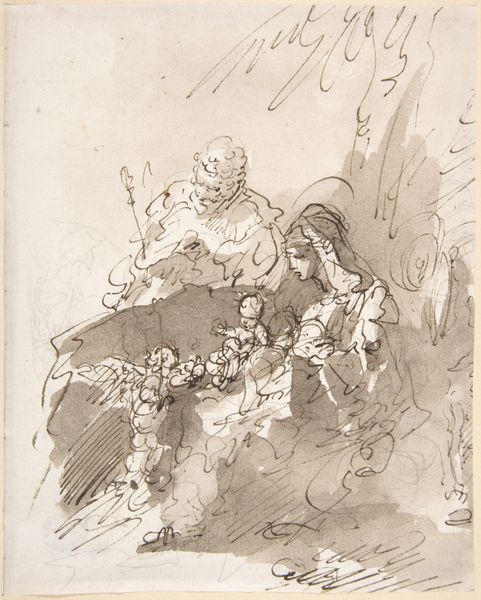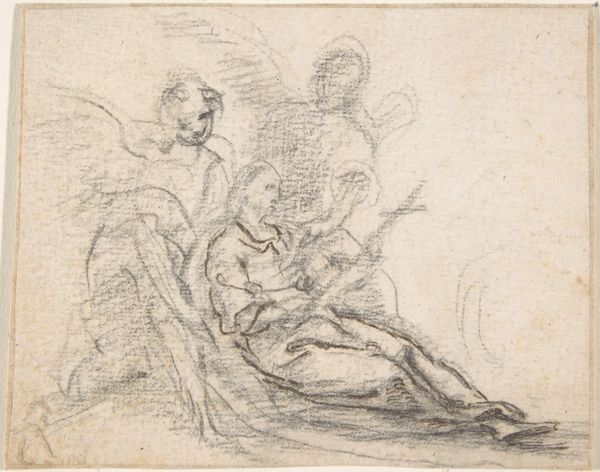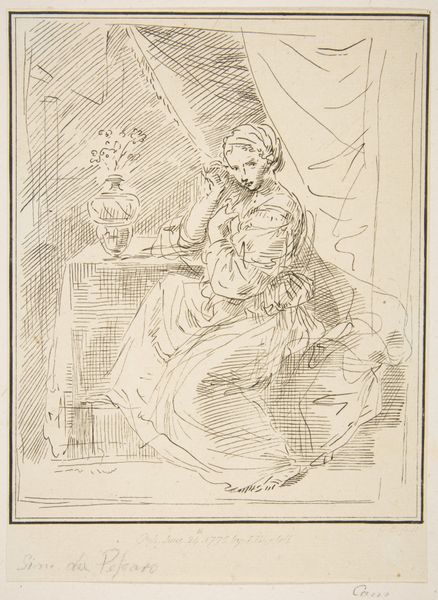
#
toned paper
#
quirky sketch
#
pencil sketch
#
personal sketchbook
#
ink drawing experimentation
#
sketchbook drawing
#
watercolour illustration
#
storyboard and sketchbook work
#
sketchbook art
#
watercolor
Dimensions: height 165 mm, width 187 mm
Copyright: Rijks Museum: Open Domain
Editor: We're looking at "De Nederigheid" – "Humility" – a watercolour and pencil sketch by Elias van Nijmegen, dating from between 1677 and 1755. There's such a gentle, almost melancholic mood to this work. What catches your eye when you look at it? Curator: Isn't it marvelous how much emotion he conveys with such seemingly simple lines? For me, it's the quiet narrative woven into this scene that speaks volumes. We see the embodiment of Humility, seated regally but casting aside the worldly orb at her feet. It makes me wonder, doesn't it, what does it truly mean to relinquish earthly power? Do you feel it is a forced humility or one willingly embraced? Editor: That’s a powerful point! I initially saw it as melancholy, but maybe it's acceptance? Or even defiance of worldly expectations? The orb almost seems like it's escaping her grasp rather than being rejected. Curator: Exactly! The dynamism in something that at first seems so still. Van Nijmegen gives us such intriguing tension. Think of the Dutch Republic during his time – obsessed with wealth, trade, social standing. Perhaps this drawing is his gentle whisper against the clamour for more, more, more! Are we richer, he implies, with less? Editor: That context really illuminates the piece. It's like a quiet rebellion sketched in watercolor. I came in thinking it was just a subdued sketch. Curator: But art rarely settles for just "is," does it? It questions. It provokes. Van Nijmegen nudges us to contemplate the genuine wellsprings of value. Sometimes, that can look an awful lot like humility. Editor: This has completely changed my understanding. Now I see the quiet strength, not just sadness, in Humility's posture. It’s been a revelation to unpack this piece with you! Curator: And for me too! Isn’t it just wonderful to uncover unexpected depths together?
Comments
No comments
Be the first to comment and join the conversation on the ultimate creative platform.
